Biology: B2.1~supplying the cell
1/34
There's no tags or description
Looks like no tags are added yet.
Name | Mastery | Learn | Test | Matching | Spaced |
|---|
No study sessions yet.
35 Terms
what is diffusion?
The movement of particles from an area of high concentration to an area of low concentration down a concentration gradient until evenly distributed
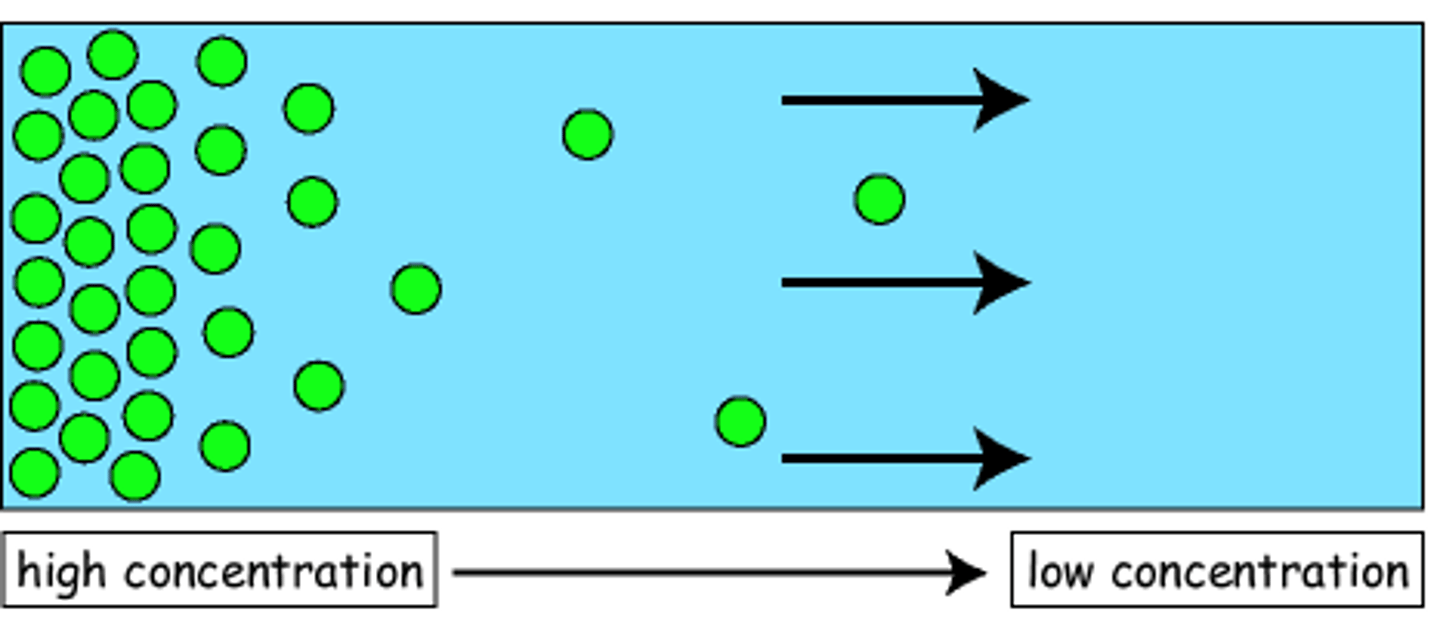
How do substances pass/leave the body?
by diffusion through the cell membrane
What are examples of substances that diffuse into the body?
glucose and oxygen
What are examples of substances that diffuse out the body?
CO2- out of respiring cells and urea- out of cells into blood to the kidney (produced in the liver)
What are the factors that affect the rate of diffusion?
short diffusion distance
large concentration gradient
a high surface area
Why does a high surface area increase the rate of diffusion?
as there is more space for diffusion so more particles can move in a given period of time
What is osmosis?
the net movement of water molecules from a high water potential to a low water potential down a water potential gradient across a selectively permeable membrane
When is there a greater rate of osmosis?
when there is a grater rate in water potential
How does osmosis work?
when a solute is dissolved in water, water molecules cluster around the solute molecules. This leaves fewer water molecules to diffuse to other area. the free water molecules is the water potential.
What happens to a plant cell placed in a less concentrated solution (higher water potential)?
cells placed in a dilute solution take up water by osmosis. The turgor pressure increases and the cells becomes turgid.
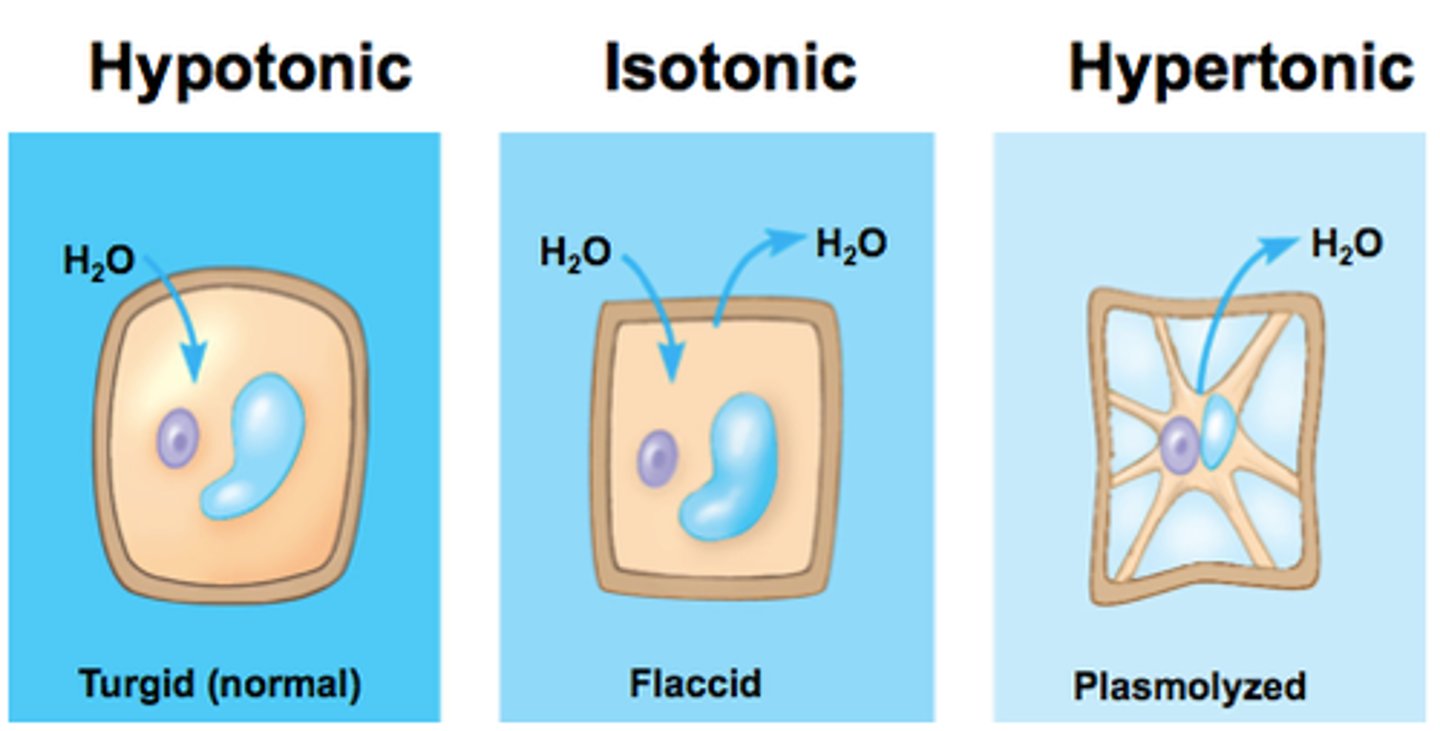
What happens to a plant cell placed in a solution of the same concentration (equal water potential)?
cell placed into a solutions with the same water potential means there is no more movement of water. The cell remains the same.
What happens to a plant cell placed in a more concentrated solution (lower water potential)?
it loses water by osmosis, the turgor pressure decreases and the cells becomes flaccid. Eventually, the cell contents collapses from its cell walls and becomes plasmolysed
Why do plants wilt if they haven't been watered enough?
there is a lwp outside the cell and the water moves out by osmosis
What happens to a animal cell placed in a less concentrated solution (higher water potential)?
it takes up water by osmosis, it swells up and may burst. This is called lysis.
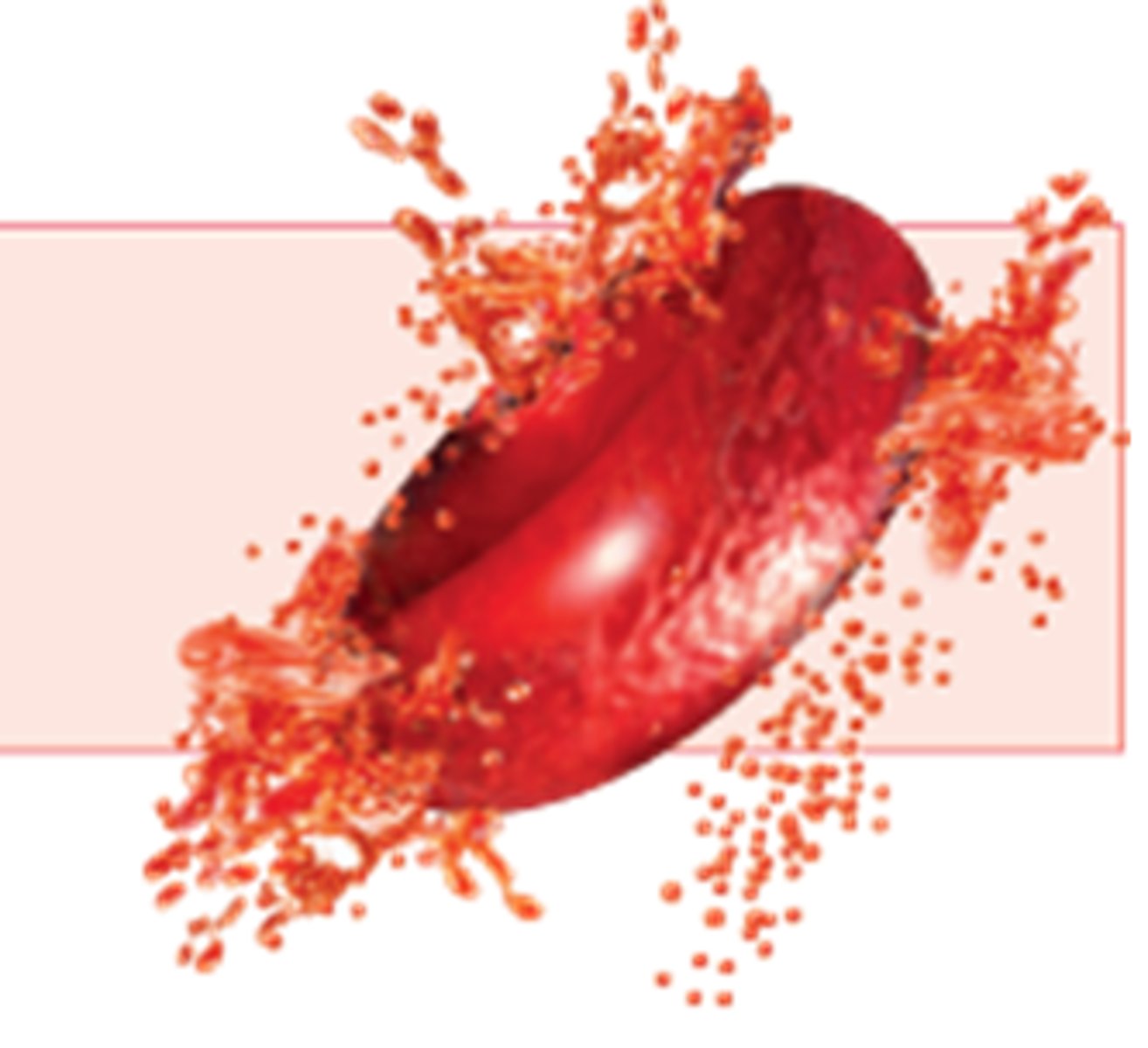
What happens to a animal cell placed in a solution of the same concentration (equal water potential)?
there is no net movement of water, the cell remains the same
What happens to a animal cell placed in a more concentrated solution (lower water potential)?
it loses water by osmsosis the cell becomes crenated
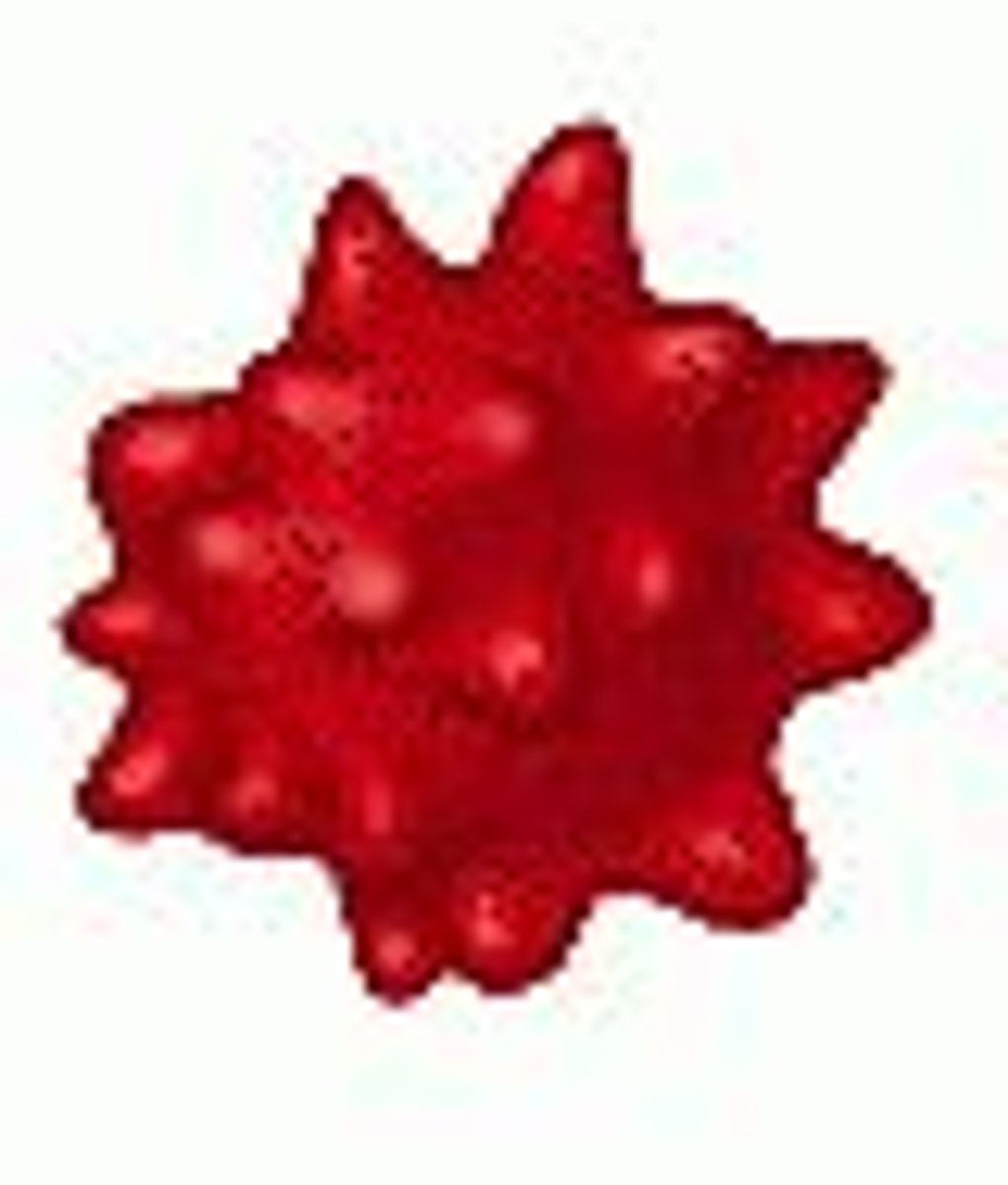
Why do rbc burst when they take in too much water whilst plants don't?
because animal cell do not have a cell wall
How do you calculate percentage change?
final-initial/initial * 100

What is active transport?
movement of substances from an area of low concentrations to an area high concentration, particles moving against a concentration gradient energy (ATP) required
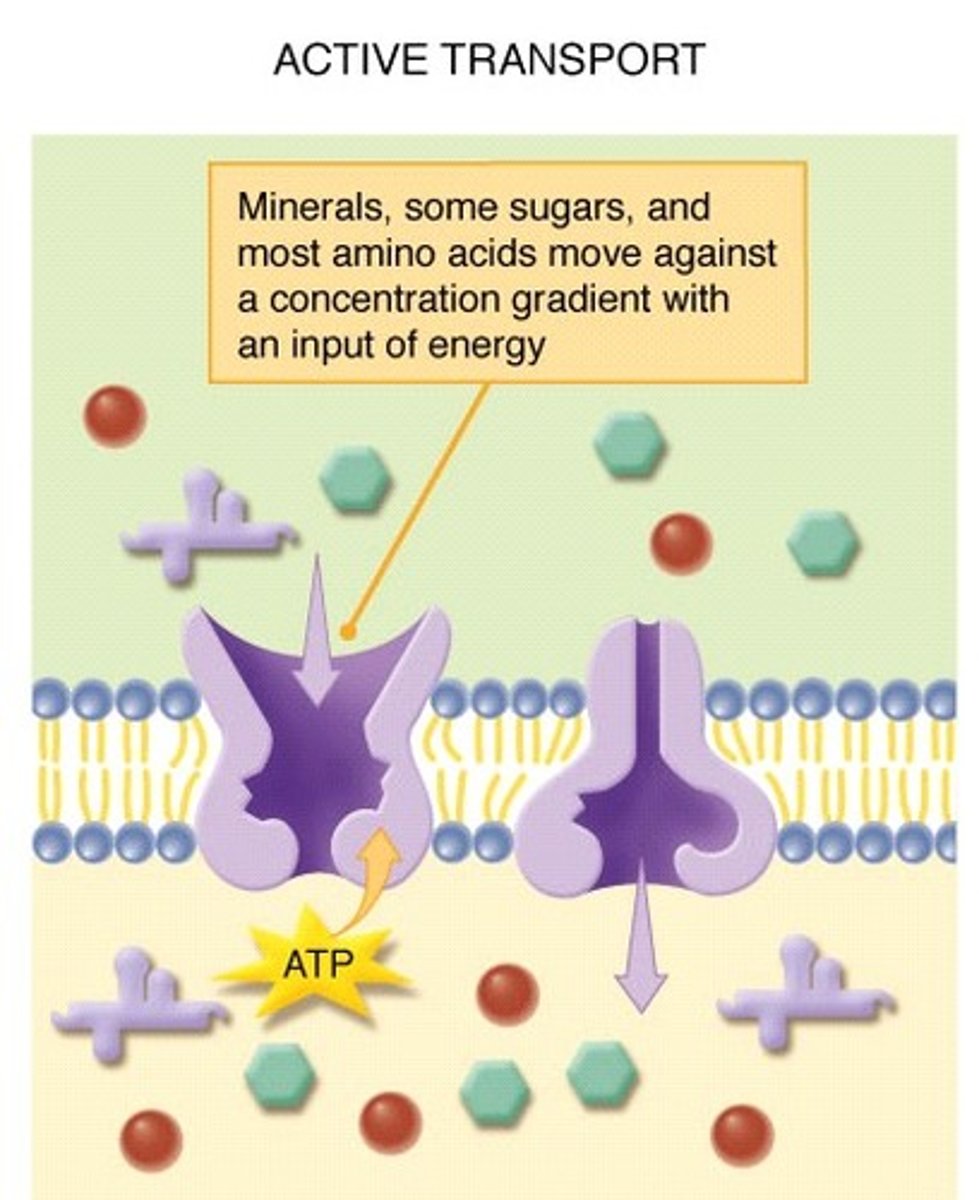
How does active transport work?
molecules move across the cell membrane form an area of low concentration to ana area of high concentration
particles move against concentration gradient + energy required
it needs a carrier protein which spans across the cell membrane
a particular molecule binds to a specific carrier protein. energy is transferred to the carrier protein causing it to change shape/rotate
EG of active transport
digestion, nerve cells, root hair cells
Why do body cells divide?
Replace worn out cells
Repair damaged tissues
To grow
asexual reproduction
How does mitosis work?
1) chromosomes in the cell are copied
2) they duplicated cells line up across the centre of the cells
3) each double chromosome splits into its two identical copies
4) each copy moves to opposite ends of the cell
5) 2 nuclei form w a full set of chromosomes
6) the cell divides into 2 genetically identical daughter cells
What happens to cells such as rbc and palisade cells
they become specialised
What are stem cells?
cells used for growth, repair and development and divide by mitosis
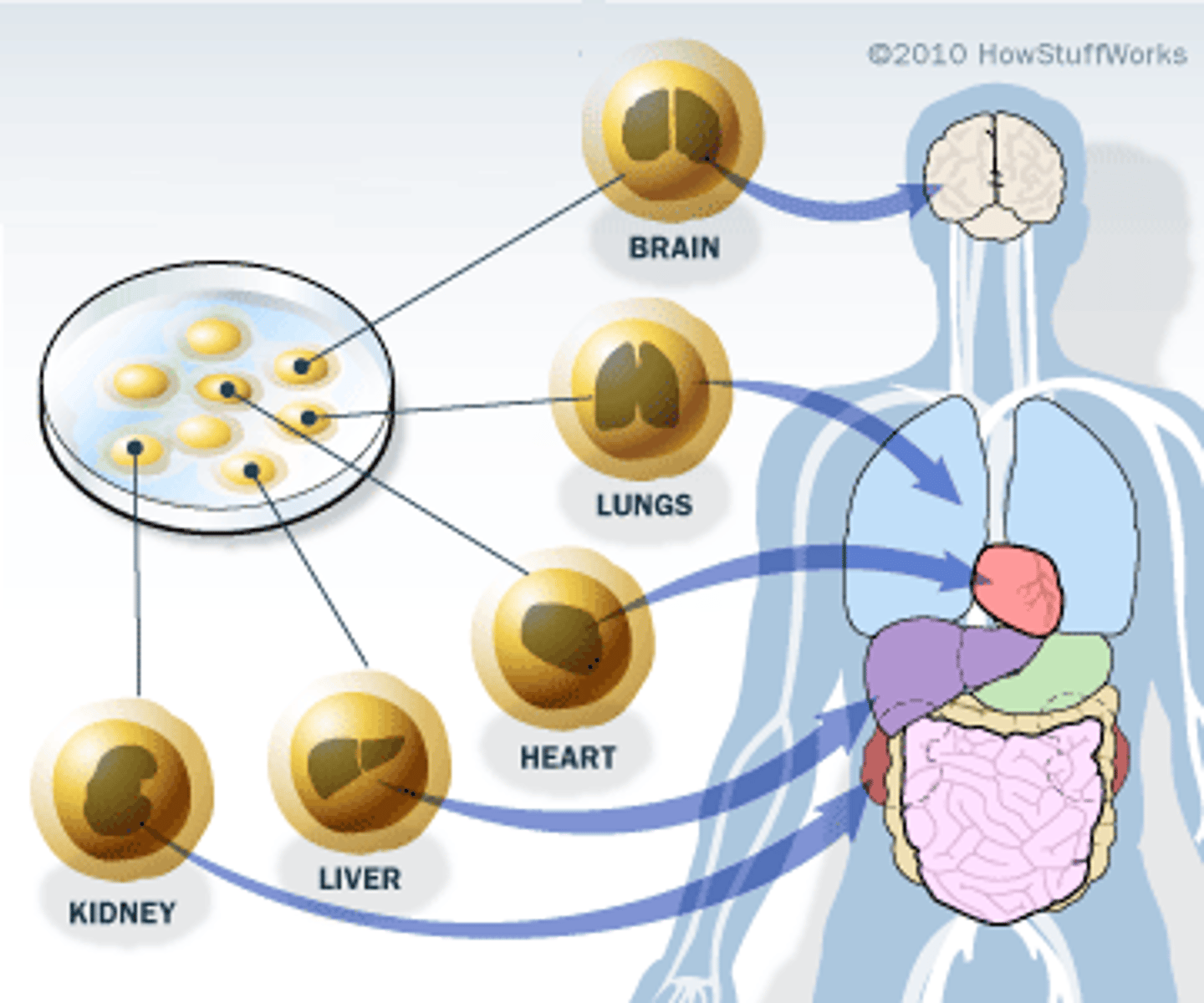
What are cells in the early embryo called?
embryonic stem cells and produce ALL cells needed to make and organism
What are adult stem cells able to do?
they are able to differentiate into SOME different types of cells not all, they are found in various body tissues such as brain, bone marrow, skin and liver
What is the function of the sperm cell
transfer genetic material from sperm to egg
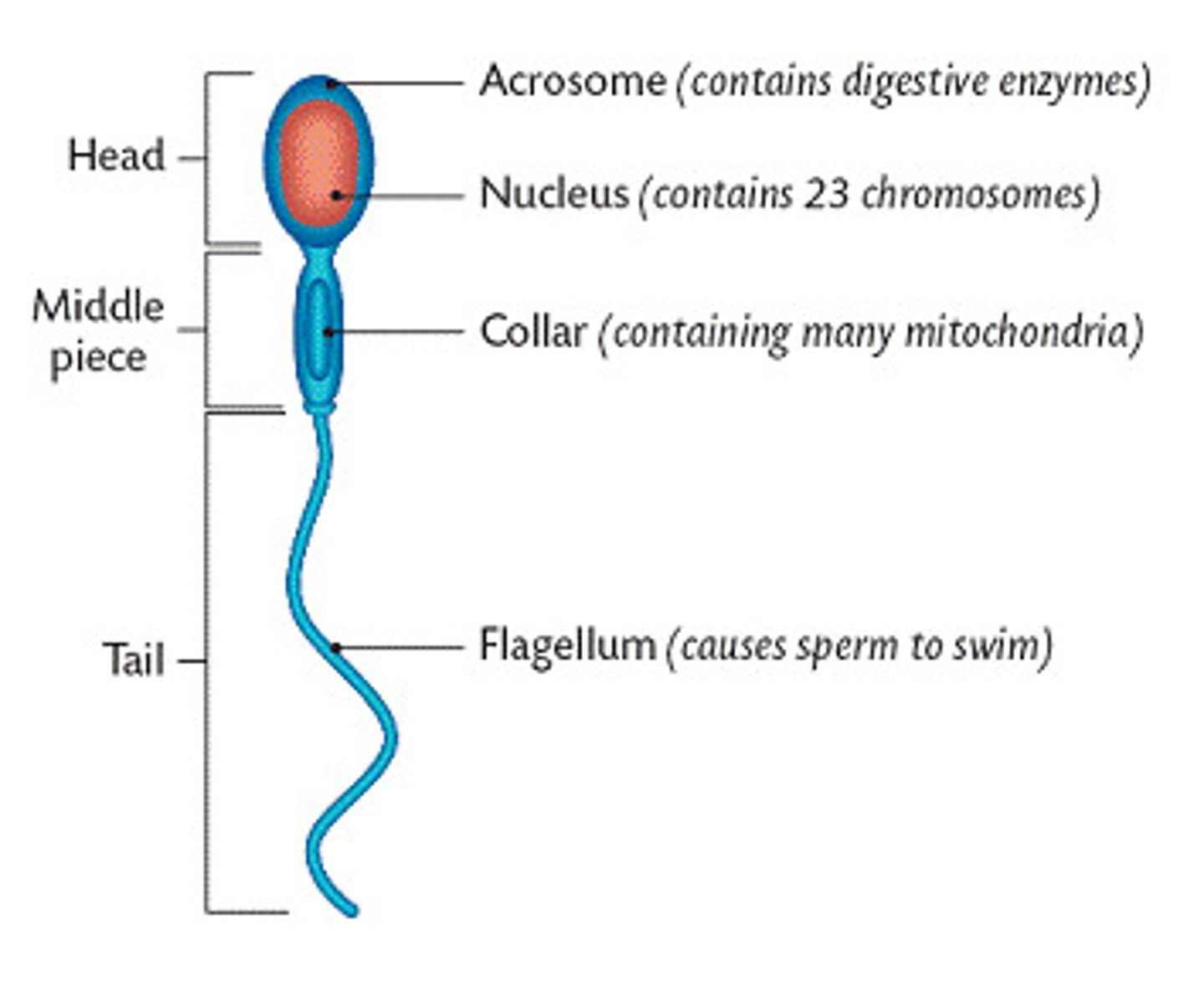
What are the adaptations of the sperm cell?
falgellum- whips from side to side to propel the sperm to the ovum
lots of mitochondria- respirations to move
acrosome- stores digestive enzymes breaks down layer of egg to allow sperm to transfer genetic material
What is the function of the cilliated and goblet cells
produces sticky mucus that traps dirt and bacteria, the cillia sweeps mucus away from lungs to the back of the throat then bacteria is killed in stomach
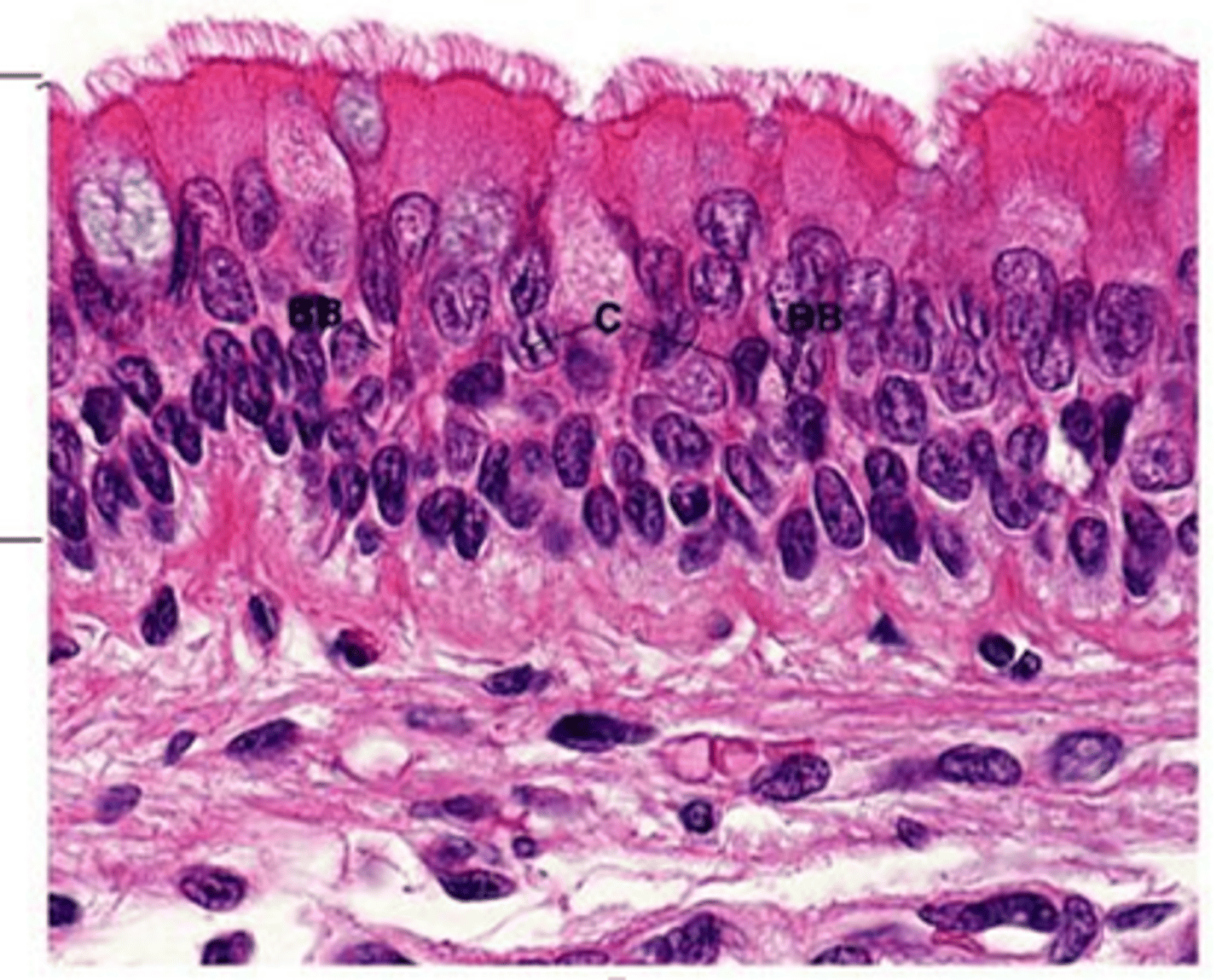
Where are the the cilliated and goblet cells found?
in your airways
What is the function of the fat cells
store fat use as store of energy, provide insulation + protective layer
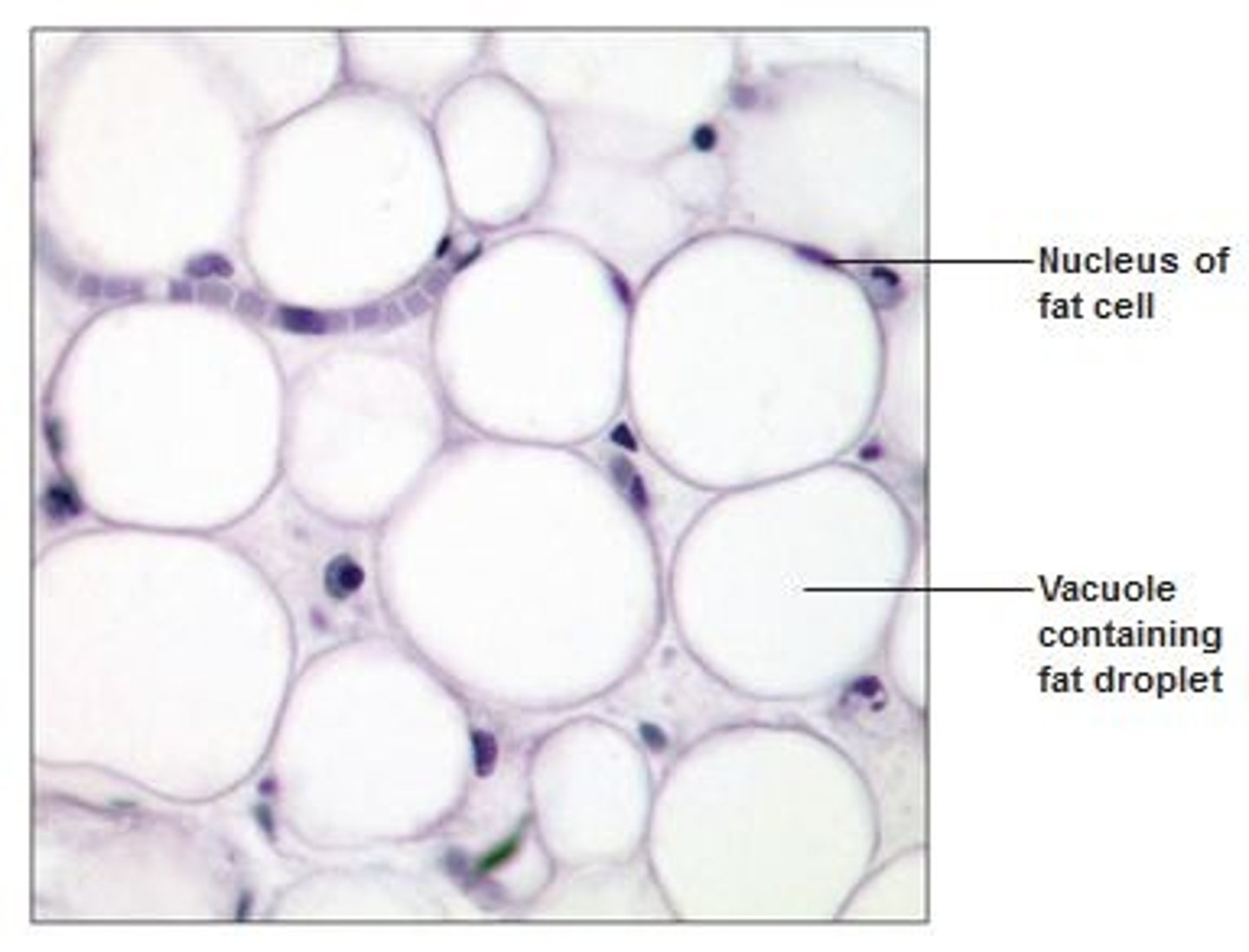
What are the adaptations of the fat cell?
small layer of cytoplasm
can expand up 1000x times thier size
What is the function of the palisade cells
carry out photosynthesis
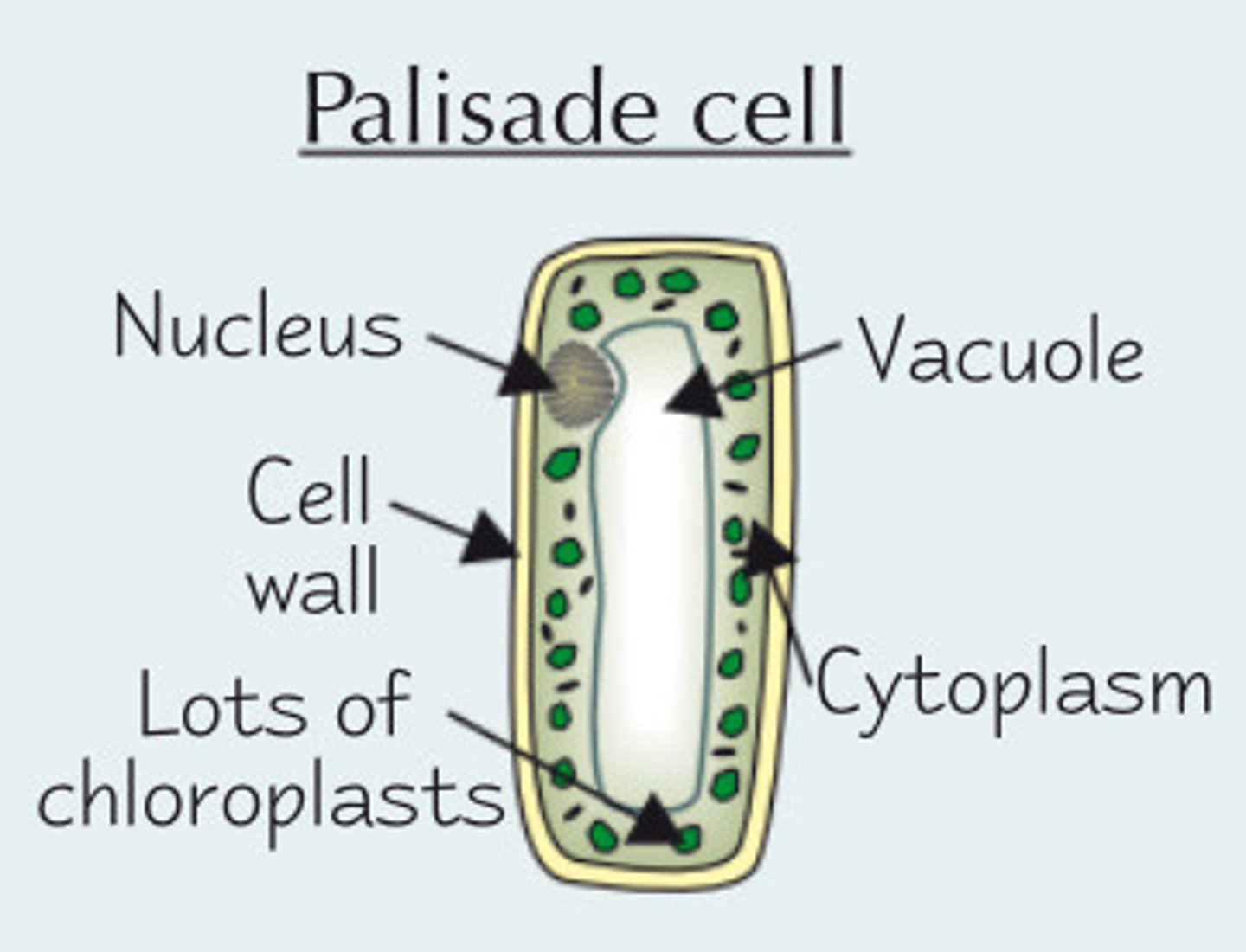
What are the adaptations of the palisade cell?
found near the surface of the cell packed full of chloroplasts
have a regular shape to maximise absorption of sunlight